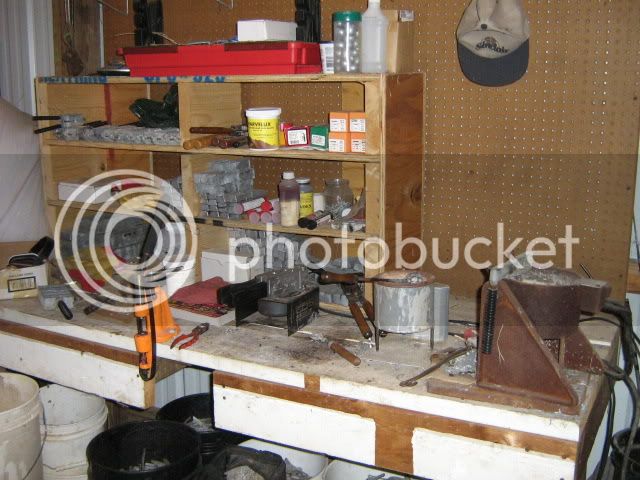ncbengal
Member
I have used different brands of "hard cast" 158 gr .357 swc bullets in my s&w 686 and Mod 19, both w/6" bbl and in good condition. These ought to produce decent groups from sand bag, which for sake of argument I'll call 2" at 25 yd. Powders range from Tite Group, 231, Universal, Auto Comp, up and down the scale. Never able to achieve better than 5-6" consistently. A change to copper plated or jacketed bullets brought my groups down to an acceptable level. Then I "accidentally" bought a 500 box of softer swaged bullets by Magnus. A phone call confimed these are 9-11 hardness whereas hard cast are 18-19. Another source had suggested Solo 1000 for lead and target use. Having very little published about Solo 1000 in .38 spl cases, I made a horseback guess at 3.0 gr of Solo and made a few. (Found another source that said min of 3.1 gr with 158 gr lead - good guess!.)
Bottom line: These loads will drive nails! Impact is centered with even .357 loads; recoil is lighter than store bought .38's; 5 shot groups 1-2" from sand bag is no problem.
Someone(s) have already said to check the barrel and cylinder bore diameter on my guns, as maybe hard cast bullets are leaking gas; but I figure S&W has had more experience in making gun barrels than I have in measuring, so I'll forego that. Barrel leading seems not to be an issue so far, but we'll watch out and just keep on lobbing those soft bullets into the 10-ring.
Bottom line: These loads will drive nails! Impact is centered with even .357 loads; recoil is lighter than store bought .38's; 5 shot groups 1-2" from sand bag is no problem.
Someone(s) have already said to check the barrel and cylinder bore diameter on my guns, as maybe hard cast bullets are leaking gas; but I figure S&W has had more experience in making gun barrels than I have in measuring, so I'll forego that. Barrel leading seems not to be an issue so far, but we'll watch out and just keep on lobbing those soft bullets into the 10-ring.


